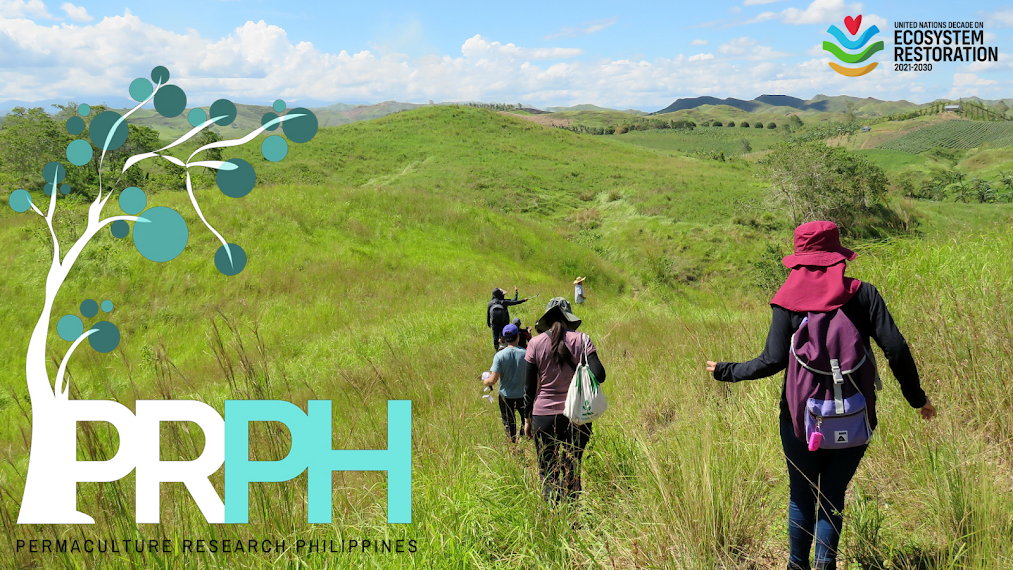I started my small organic herb and vegetable garden in front of my apartment in mid-2012 with the simple goal of growing pesticide-free vegetables for me and my family. Like any novice backyard gardener, I wanted to find out first if I had a “green thumb”--that is, if I was capable of growing any plant at all!
Curious, innocent, and very excited , I sowed tomato seeds directly on a small 1x4 plot I cleared right in front of my porch. Every night after work , I would check if the seeds have sprouted. After a few days, I finally saw signs of life. And yet the excitement was cut short when the midday sun started to bake the soil while the heavy July rains hammered the plot in the afternoons continuously. Maybe direct-sowing was wrong. That was my initial reaction. And so I started planting in pots and containers and placed net bags over it to protect it from the heat and the heavy rains. When the seedlings reached a certain height, I transplanted them into the tilled plots.
This simple system of planting worked for me until the end of the year. I was able to harvest a decent amount of vegetables considering my limited experience in gardening. Thinking that I could just repeat what I did the following year, I started to expand my garden. Unfortunately, 2013 turned out to be a very wet and rainy chapter.
Climate Change and the Backyard Gardener
For the average person, the daily effects of climate change is
usually experienced through increased personal discomfort and
inconvenience brought about by extreme heat and heavy rains. But for the
backyard gardener, climate change means more than just discomfort or
inconvenience. Gardening and growing vegetables heighten one’s
sensitivity and awareness to climate change because crop yield depends
largely on the weather condition.Focusing on individual crop protection and health, like the installation of net houses or greenhouses, are temporary solutions to reducing the harsh effects of climate change on backyard gardens. But the backyard gardener must realize that he or she has a larger role to play far beyond feeding one’s own families and beautifying the landscape.
As I read books and studied about gardening, I stumbled upon a concept called “permaculture.” Permaculture is a design system and a philosophy that encourages the backyard gardener to observe nature and work with it rather than against it while capturing and storing as much energy as he can. Having this in mind, I began observing how the elements within my garden interacted and responded with the larger ecosystem in which it is a part of.
Observations
I
spent most of 2013 just observing how my garden “worked” as a system.
It’s all about planning and identifying patterns and the beneficial
relationships of different elements or components and the roles they
play in building a resilient and productive backyard garden.Trees provide shade and protection while softening the effects of strong winds and harsh sunlight. Mulch retains moisture in the soil and helps build organic matter. Some weeds provide a habitat for beneficial insects. Herbs keep pests at bay. Goats provide nitrogen-rich manure and control weed growth.
By taking note of observations such as these, the backyard gardener will be able to design an efficient garden based on judgments made with an ecological consciousness. When the backyard gardener understands these relationships, he allows his landscape to be more responsive to the unpredictable behavior of the environment rather than just building a man-made landscape patch that counteracts natural processes.
An Ecological Consciousness
Ever wondered why forests can withstand typhoons and intense heat?
It’s because nature has its own way of restoring and regenerating
itself. It’s our job to observe these natural processes and try to
enhance them—not alter them—to provide what we need.My gardening style is more horticultural rather than agricultural. In agriculture, tracks of land are stripped bare and tilled to make way for the planting of single crops. This leaves the landscape vulnerable to natural disasters and pest infestations. Call it horticulture, agroforestry, or permaculture, whatever the design or the philosophy is, expect the garden, at first glance, to look like a mess if we base it on modern lawn and garden design standards. It is by letting nature take its course, allowing weeds to grow and producing as much organic matter by using energy stored in manure and dried leaves, that one can truly appreciate the capacity of nature to heal itself. This we have to reckon with, deserving our utmost respect.
The key to a successful backyard garden is to restore rather than manipulate. In the long run, altering and manipulating the landscape would make the effects of climate change more prominent and more destructive. As scientists continue to debate whether climate change is a natural occurrence or man-made, its harsh effects would definitely be diminished if we garden with an ecological consciousness.
Source: http://www.greenpeace.org/seasia/ph/News/greenpeace-philippine-blog/backyard-gardening-and-climate-change/blog/50860/






.png)